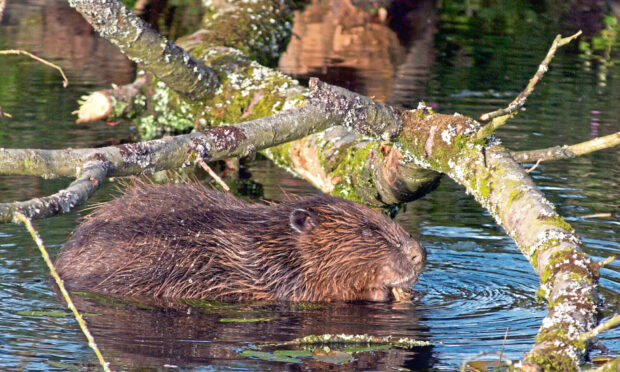A new national strategy has been developed to expand Scotland’s beaver population while minimising any negative effects through management and mitigation.
NatureScot estimates Scotland’s beaver population is already around 954 animals in 254 territories, and the new strategy, which runs until 2045, emphasises the need for ongoing research and improved management as the species expands.
NatureScot’s chief executive, Francesca Osowska said the expansion of the population would take into account the views of local communities.
Read more: Could beavers be moving into Cairngorms? National park board agrees to spearhead introduction
“NatureScot is committed to taking a lead role in implementing this strategy and much work is already under way, including mapping to prioritise suitable catchments, and conversations with a range of individuals and organisations to discuss possible new areas for beavers,” she said.
NFU Scotland will be involved in the advisory group that will take the strategy forward, and union president, Martin Kennedy, is committed to ensuring that damage to productive farmland is minimised.
Wildlife management needs ‘sensitivity’
“On translocation, a robust consultation process must be put in place to ensure that all those individuals and communities potentially impacted by the planned movement of beavers to a new location can give their views,” he said.
“To deliver the translocation policy, NatureScot must have sufficient resources to undertake trapping and deliver mitigation measures in areas where significant and costly damage to farmland is occurring. Funding should not come from within existing agricultural schemes.
“And, where mitigation and trapping measures fail, dam removal and lethal control must remain an option. We believe in sensitively managing wildlife to benefit and improve our biodiversity in balance with our need to produce food and keep the nation fed.”
Sarah Robinson, director of conservation at the Scottish Wildlife Trust, said: “Biodiversity is declining at a faster rate now than at any time in human history. Beavers provide a nature-based solution to tackling the growing crisis.
“The national strategy sets out how to help beavers become established throughout Scotland’s lochs, burns and rivers, and the many ways that both people and wildlife will benefit from their presence. We need to act urgently to implement this.”


Conversation